AI Use Cases in Contact Centers and Implementation Steps
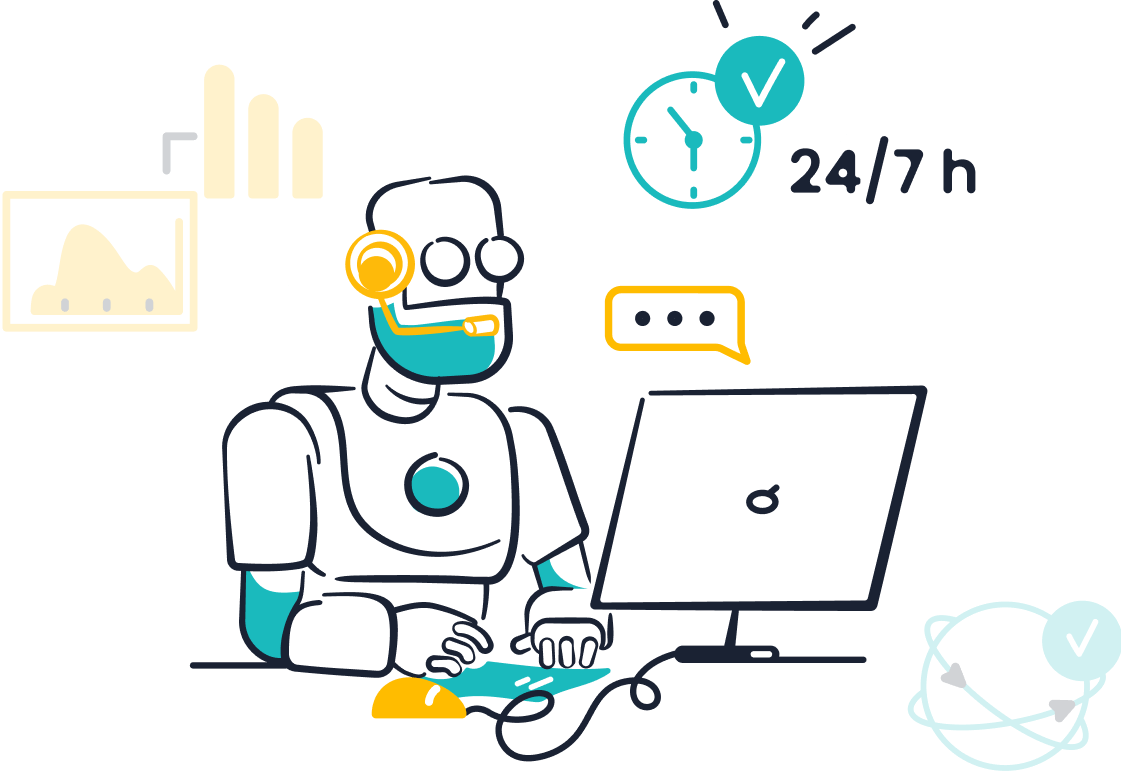
AI is changing how you interact with businesses. In modern contact centers, AI isn’t just a tool—it’s a game changer. By 2025, 80% of customer service organizations are expected to adopt generative AI, automating most routine interactions and cutting wait times significantly. Tools like Sobot's Chatbot are leading the charge, handling complex queries faster and offering proactive solutions that improve customer satisfaction.
Why does this matter? AI use cases in contact centers, like predictive analytics and sentiment analysis, help you understand customer needs better. But success isn’t just about adopting AI—it’s about doing it right. Structured implementation ensures the technology works seamlessly, delivering real value to both businesses and customers.
AI Use Cases in Contact Centers
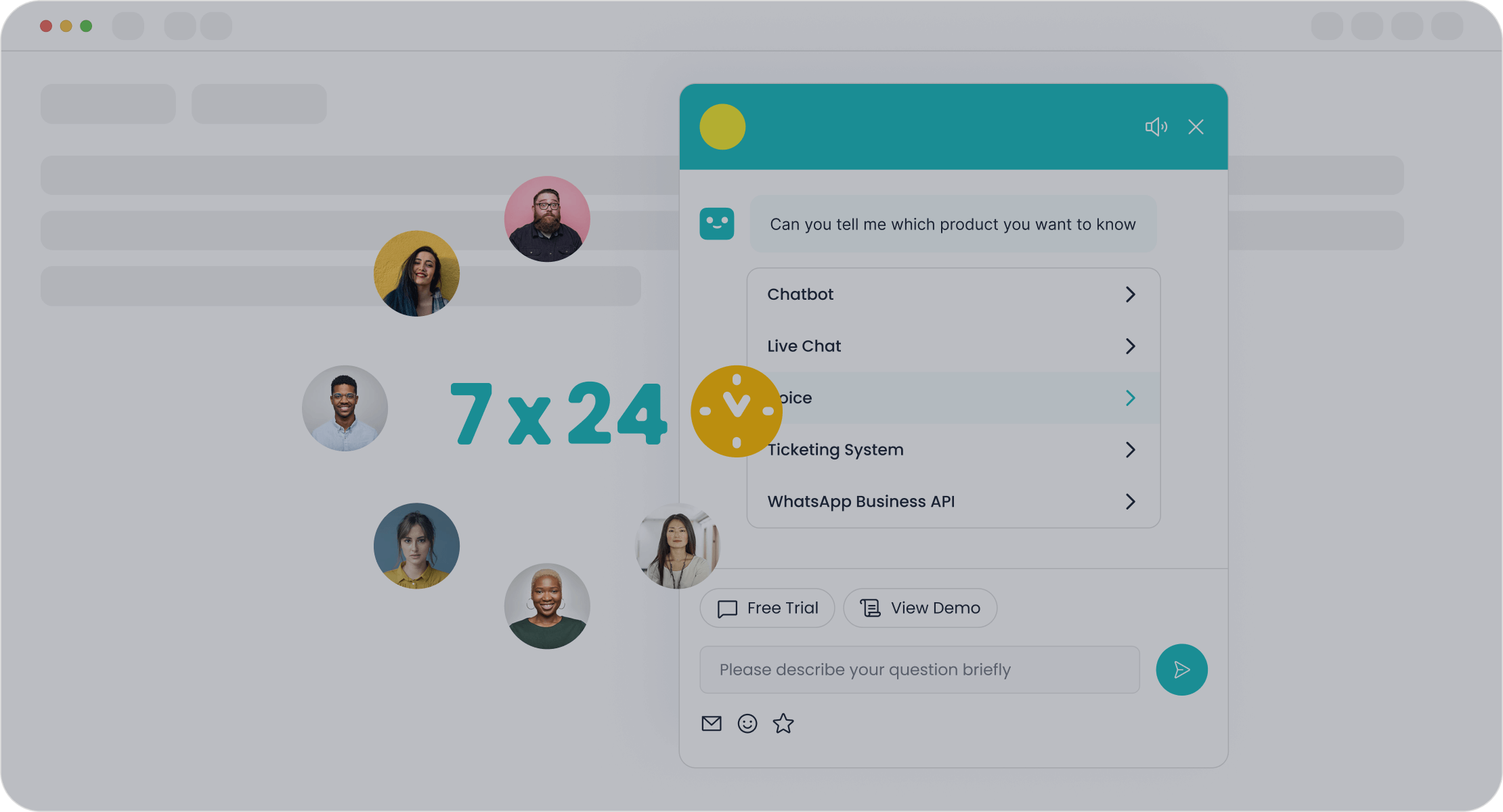
Enhancing Customer Interactions with Chatbots
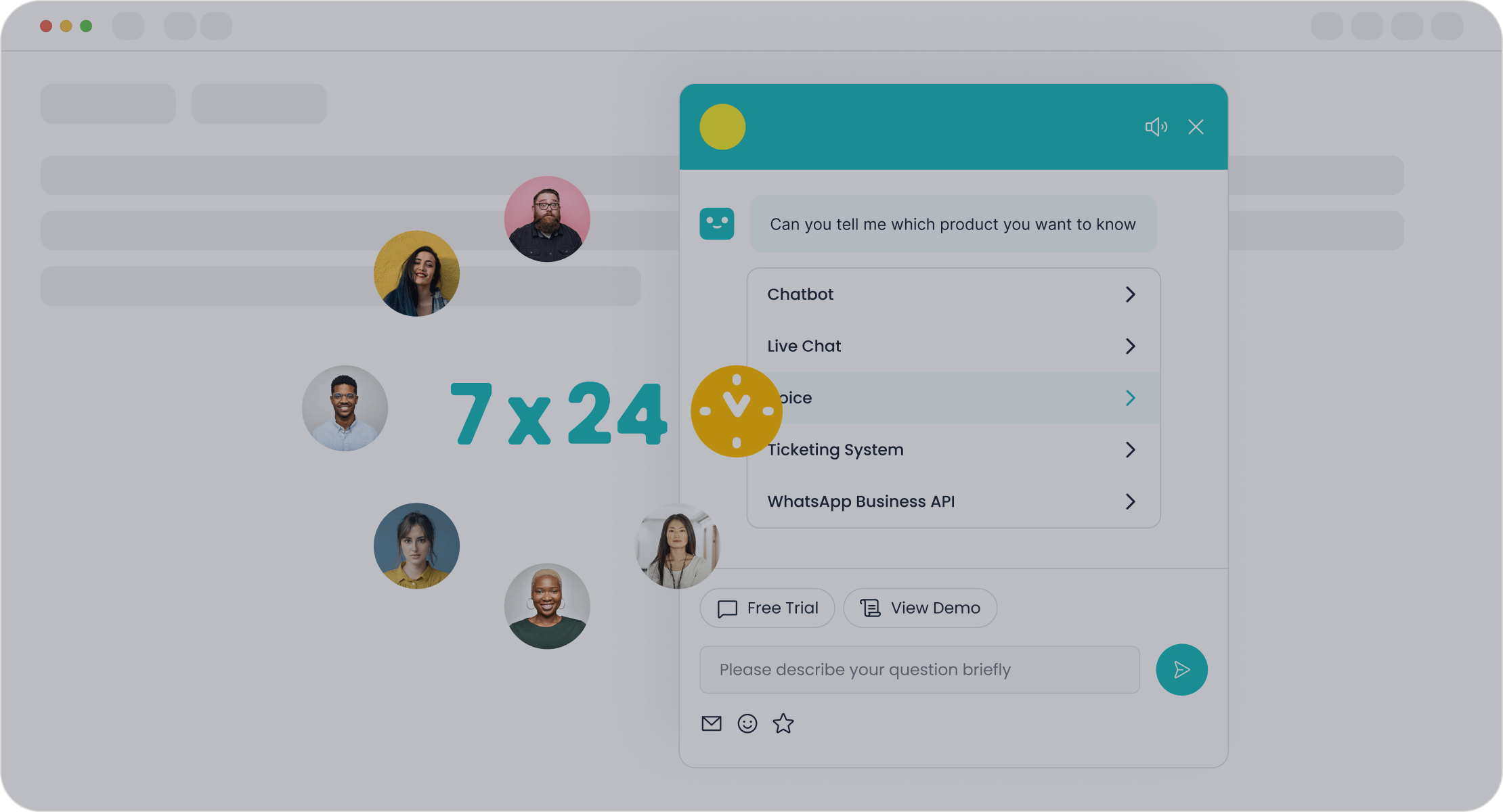
Chatbots are revolutionizing how you interact with businesses. Imagine reaching out to a contact center and getting instant answers to your questions—no waiting, no frustration. That’s the power of AI-driven chatbots like Sobot’s Chatbot. These tools handle routine queries autonomously, freeing up human agents to focus on complex issues. They’re available 24/7, ensuring fast resolution even during peak hours.
Here’s the best part: chatbots don’t just answer questions. They enhance your customer experience by offering personalized recommendations and proactive solutions. For example, OPPO, a global smart device leader, used Sobot’s Chatbot to achieve an 83% resolution rate for customer inquiries. This human-machine collaboration improved efficiency and boosted customer satisfaction.
Chatbots also support an omnichannel experience, meaning you can interact with them across platforms like WhatsApp, SMS, and social media. With natural language processing, they understand your queries in real-time, making interactions seamless and intuitive.
Sentiment Analysis for Real-Time Customer Insights
Have you ever felt like a business truly understood your emotions during a conversation? That’s sentiment analysis at work. This AI-powered tool analyzes your tone, word choice, and even pauses to gauge your feelings. It’s like having a virtual empathy meter that helps businesses respond to you more effectively.
Real-time customer insights gained through sentiment analysis allow contact centers to tailor their responses. If you’re frustrated, agents can prioritize your issue and offer solutions that calm the situation. This approach improves your overall customer experience and ensures fast resolution of problems.
Advanced technologies like machine learning and natural language processing make sentiment analysis incredibly accurate. Businesses use it to enhance agent performance by providing immediate feedback based on customer emotions. This not only boosts efficiency but also creates a more empathetic interaction.
Predictive Analytics for Proactive Customer Support
Wouldn’t it be great if businesses could anticipate your needs before you even ask? Predictive analytics makes this possible. By analyzing data like engagement levels, product usage, and support ticket trends, contact centers can identify potential issues and address them proactively.
For instance, predictive analytics can calculate churn risk scores to determine which customers might leave. This allows businesses to take action, such as offering personalized discounts or resolving recurring problems. Customer health scores also help identify at-risk customers, ensuring they receive the attention they need.
Sobot’s AI solutions excel in this area. They provide actionable insights that help businesses optimize their operations and improve customer satisfaction. By leveraging predictive analytics, contact centers can deliver proactive support, reducing cart abandonment and increasing sales.
AI-Powered Call Routing and Prioritization
Imagine calling a contact center and being instantly connected to the right agent who can solve your issue without transferring you multiple times. That’s the magic of AI-powered call routing. This technology uses real-time data to match your query with the most suitable agent, ensuring faster resolutions and a smoother experience.
AI-powered call routing doesn’t just stop at connecting you to the right person. It also prioritizes urgent calls, so if you’re dealing with a time-sensitive issue, you won’t have to wait in line. This approach significantly reduces wait times and boosts customer satisfaction. In fact, companies using AI for routing report impressive results:
| Insight | Percentage |
|---|---|
| Companies aiming to enhance customer satisfaction | 62% |
| Companies looking to streamline workflows | 42% |
| Companies boosting satisfaction | 36% |
| Companies reducing wait times | 33% |
| Companies eager to employ AI for routing | 25% |
| Companies interested in sorting requests by urgency | 20% |
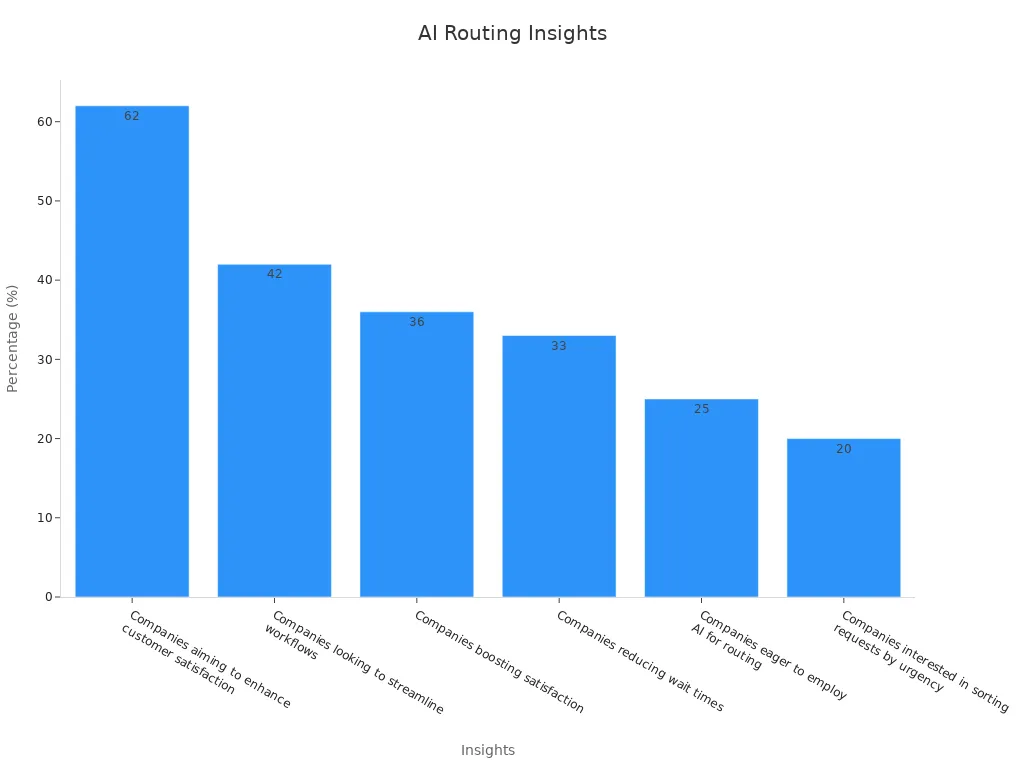
Sobot’s AI solutions take this a step further by integrating advanced machine learning algorithms. These systems analyze customer data, such as past interactions and preferences, to ensure you’re always routed to the best resource. This not only improves first-call resolution rates but also enhances the overall quality of service. Whether you’re reaching out via phone, chat, or social media, Sobot ensures seamless and efficient routing across all channels.
Tip: AI-powered call routing is especially beneficial during peak hours when call volumes are high. It eliminates unnecessary delays and ensures every customer gets the attention they deserve.
Workforce Optimization with AI Call Center Solutions
Managing a contact center workforce can be tricky. You need to balance agent availability, workload, and performance while keeping customers happy. That’s where AI call center solutions come in. These tools optimize workforce management by analyzing real-time and historical data to predict call volumes, schedule agents, and monitor performance.
For example, AI can forecast busy periods and adjust staffing levels accordingly. This ensures you always have enough agents to handle customer inquiries without overstaffing. Workforce analytics also track key performance indicators (KPIs) like average handling time, call resolution rate, and customer satisfaction scores:
| KPI | Description |
|---|---|
| Average Handling Time | Measures how efficiently agents manage calls. |
| Call Resolution Rate | Indicates the effectiveness of issue resolution. |
| Customer Satisfaction | Reflects the overall experience and service quality. |
Sobot’s AI-powered call center solutions excel in workforce optimization. By leveraging predictive analytics, Sobot helps you anticipate customer needs and adjust operations in real time. For instance, if data shows a spike in inquiries about a specific product, Sobot’s system can allocate more agents to handle those queries. This proactive approach not only improves efficiency but also enhances the customer experience.
Did you know? Companies using AI to optimize their workforce see significant improvements in agent productivity and customer satisfaction. Predictive AI ensures your team is always prepared to deliver top-notch service.
With Sobot’s solutions, you can also monitor agent performance and provide targeted training to address skill gaps. This creates a more engaged and efficient workforce, ultimately leading to better service quality and happier customers.
Steps to Implement AI Effectively
Define Objectives for AI Integration
Before diving into AI implementation, you need to set clear goals. What do you want to achieve with AI in your contact center? Maybe you’re aiming to improve customer satisfaction, reduce response times, or boost operational efficiency. Whatever your objectives, make sure they’re specific and measurable. For example, you could aim to increase your Net Promoter Score (NPS) by 15% or reduce average handling time by 20%.
Align these goals with your overall business strategy. This ensures that your AI tools don’t just solve isolated problems but contribute to your broader success. Metrics like customer satisfaction scores, first-call resolution rates, and agent productivity can help you track progress.
Pro Tip: A customer-led contact center AI strategy works best when it focuses on enhancing the customer experience. Use AI-powered virtual assistants like Sobot’s Chatbot to automate routine tasks and free up agents for more meaningful interactions.
Assess Current Contact Center Infrastructure
Next, take a close look at your existing setup. Is your contact center ready for AI? Start by evaluating your current tools, workflows, and data systems. For instance, does your infrastructure support seamless omnichannel transitions? Can it integrate with AI tools to deliver personalized customer experiences?
Here’s a quick breakdown of what to assess:
| Benefit | Description |
|---|---|
| Resilient & flexible operations | Ensures adaptability to changing business needs. |
| Smart call routing | Enhances efficiency in directing calls to the right agents. |
| Improved productivity | Increases overall efficiency in handling customer interactions. |
| Personalized experiences | Integrates with CRM for tailored customer interactions. |
| Reduced customer churn | Helps retain customers by improving service quality. |
| Improved agent performance | Equips agents with better tools and information for customer service. |
| Enhanced customer & agent experience | Overall improvement in satisfaction for both customers and agents. |
If your systems fall short in any of these areas, it’s time to upgrade. For example, Sobot’s contact center AI solutions offer smart call routing and omnichannel support, ensuring your operations are both resilient and customer-focused.
Did You Know? Seamless omnichannel transitions can significantly improve customer satisfaction by making interactions smoother and more intuitive.
Select the Right AI Tools, Including Sobot's Chatbot
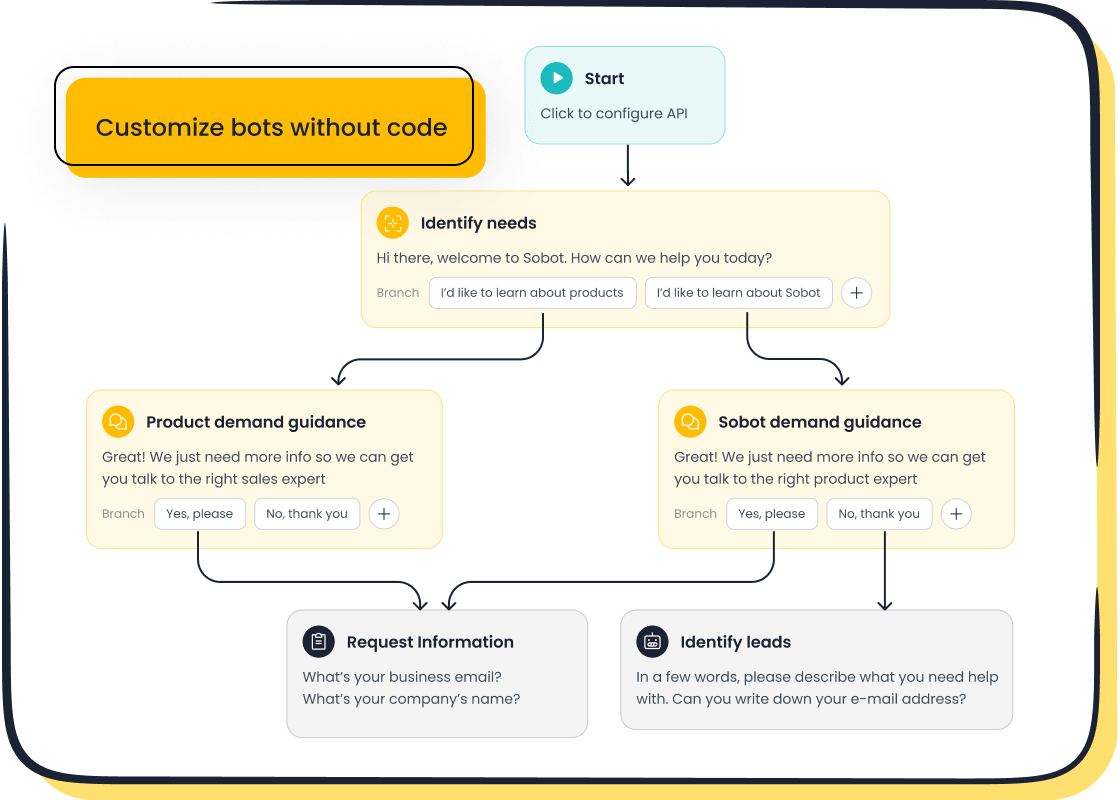
Choosing the right AI tools is critical for successful AI integration. Not all tools are created equal, so you’ll want to pick solutions that align with your goals and infrastructure. For instance, if you need 24/7 support, look for AI-powered virtual assistants like Sobot’s Chatbot. It offers advanced automation, multilingual support, and real-time intent recognition, making it ideal for modern contact centers.
Here’s how Sobot stacks up against other tools:
| Feature | Sobot | Zendesk | Freshdesk |
|---|---|---|---|
| Response Automation | Advanced automation with AI learning | Rule-based automation | Predictive automation |
| Chatbot Capabilities | 24/7 chatbot support | Integrated chatbot | Smart chatbot |
| Query Handling | Multi-language support | Contextual understanding | Priority-based handling |
| Scalability | Highly scalable | Enterprise-ready | Adaptive scaling |
Sobot’s Chatbot doesn’t just handle routine queries. It also boosts conversions by 20% through proactive messaging and smart self-service. Plus, it’s easy to set up—no coding required.
When selecting tools, also consider their impact on your industry. For example:
| Industry | Company | Automation Impact | Productivity Gain |
|---|---|---|---|
| E-commerce | ShopSmart | 40% reduction in response times | 25% increase in order processing |
| Healthcare | MedCare | 35% improvement in resolution rates | 30% reduction in support queries |
| Financial Services | BankEase | 50% faster issue resolution | 20% boost in customer satisfaction |
By choosing the right tools, you’ll set the foundation for a smooth transition to an AI-powered call center.
Actionable Insight: Look for AI tools that offer scalability and adaptability. This ensures your contact center AI solutions can grow with your business.
Train Teams for AI-Driven Customer Interactions
Your team plays a crucial role in making AI work effectively in your contact center. Training them to use AI tools isn’t just about teaching technical skills—it’s about helping them understand how AI enhances customer interactions. Start by introducing the basics of AI, like how chatbots and predictive analytics work. This builds confidence and reduces any fear of technology replacing human roles.
Focus on hands-on learning. Let your team experiment with AI tools like Sobot’s Chatbot in simulated environments. For example, they can practice handling customer queries alongside the chatbot to see how AI complements their work. This approach helps them understand when to rely on AI and when to step in for complex issues.
Also, emphasize soft skills. AI can handle routine tasks, but your agents still need empathy and problem-solving abilities for situations that require a human touch. Combine technical training with workshops on communication and emotional intelligence.
Tip: Regular feedback sessions are key. Use AI-driven insights to show your team how their interactions impact customer satisfaction. This motivates them to improve and adapt to AI-enhanced workflows.
Pilot Programs for Testing AI Solutions
Before fully committing to AI, testing it in a controlled environment is essential. Pilot programs let you evaluate how AI tools perform in real-world scenarios without disrupting your entire contact center.
Here’s how to run a successful pilot:
- Define the scope. Decide which processes or customer interactions the AI will handle during the test.
- Set clear success metrics. For example, measure resolution rates, customer satisfaction scores, or cost savings.
- Gather feedback. Involve your team and stakeholders to identify areas for improvement.
A pilot program also helps you assess the financial impact of AI. Conduct a cost-benefit analysis to determine if the long-term ROI justifies the investment. For instance, Sobot’s AI solutions have shown significant cost savings by automating repetitive tasks and reducing agent workloads.
Example: A retail company tested AI-powered chatbots during a holiday season. The pilot revealed a 40% reduction in response times and a 25% increase in customer satisfaction. These insights helped refine the chatbot’s functionality before full deployment.
Monitor and Optimize AI Performance Continuously
AI isn’t a “set it and forget it” solution. To get the most out of your AI tools, you need to monitor their performance regularly and make adjustments as needed.
Start by tracking key metrics like response time, error rate, and customer satisfaction. For example:
| Metric | Description |
|---|---|
| Quality index | Combines diverse performance metrics into a single value for overall model effectiveness. |
| Error rate | Indicates the percentage of incorrect model outputs derived through human evaluation. |
| Latency | Quantifies the response delay in the model’s architecture and processing capabilities. |
| Safety Score | Measures the model’s tendency to generate harmful or sensitive content. |
Use these metrics to identify areas where your AI tools can improve. If response times are lagging, optimize the system’s architecture. If error rates are high, refine the AI’s training data.
Real-world examples show the importance of continuous optimization. Retail businesses using AI have seen long-term benefits like increased customer lifetime value and improved inventory turnover rates. These gains come from regularly updating AI models to align with changing customer needs.
Actionable Insight: Schedule regular audits to ensure your AI tools comply with ethical standards and data privacy regulations. This builds trust with your customers and keeps your contact center running smoothly.
Benefits of AI in Contact Centers

Enhanced Customer Satisfaction and Personalization
AI is transforming how businesses connect with you, making every interaction feel tailored and meaningful. With tools like conversational AI, companies can understand your needs better and respond faster. For instance, CP All, the operator of 7-Eleven in Thailand, uses AI chatbots to handle over 250,000 calls daily. These chatbots achieve a 97% accuracy rate in understanding spoken Thai, reducing the workload on human agents by 60%. This efficiency leads to quicker resolutions and happier customers.
Personalized interactions are another game-changer. Amazon, for example, uses AI to analyze your shopping habits and recommend products you’ll love. This level of personalization not only enhances your customer experience but also builds trust and loyalty. It’s no wonder over 80% of customer care executives are investing in AI to improve service quality.
Did You Know? AI-powered tools like Sobot’s Chatbot can provide 24/7 support, ensuring you get help whenever you need it. They also offer multilingual capabilities, making communication seamless across different languages.
Increased Agent Productivity and Efficiency
AI doesn’t just make your experience better—it also helps agents work smarter. By automating repetitive tasks, AI allows agents to focus on solving complex issues. This boosts their productivity and ensures you receive high-quality service.
Take a look at the numbers:
| Metric | AI-Assisted Group | Control Group | Improvement (%) |
|---|---|---|---|
| Tasks Completed | 12.2% more tasks | N/A | 12.2 |
| Quality Score | 40% higher | N/A | 40 |
| Productivity Increase (High Performers) | 17% increase | N/A | 17 |
| Productivity Increase (Low Performers) | 43% increase | N/A | 43 |
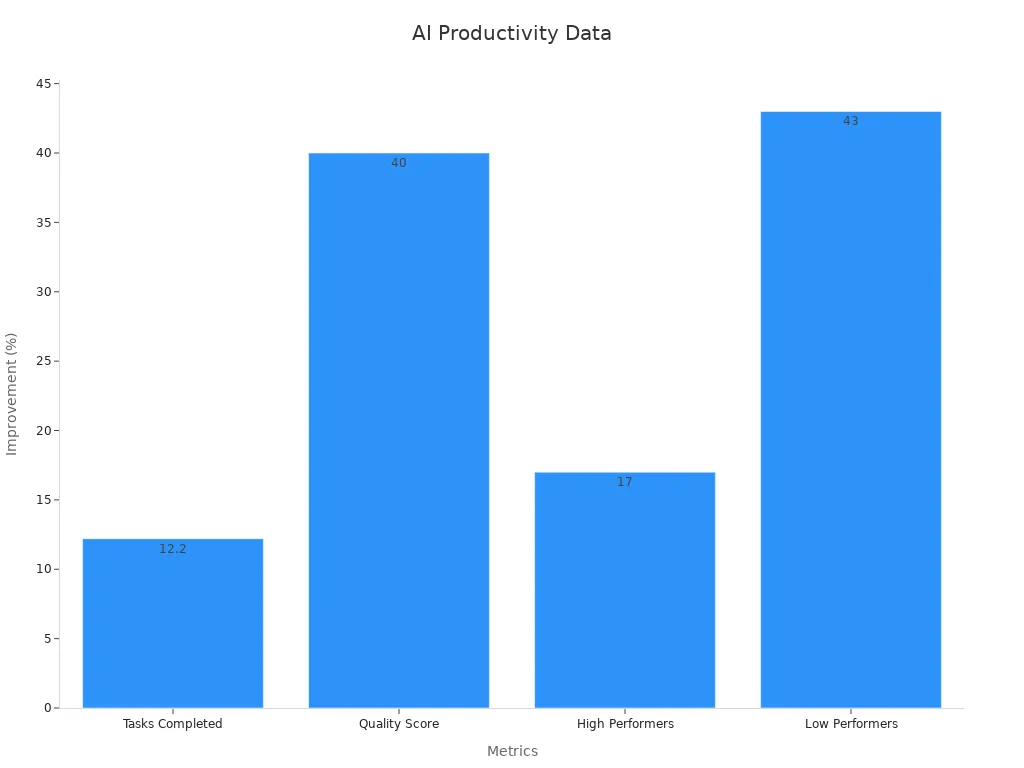

Sobot’s AI call center automation solutions take this a step further. They analyze real-time data to predict call volumes and allocate resources efficiently. This ensures agents are always prepared to handle your inquiries, no matter how busy things get.
Cost Savings Through AI Automation
AI doesn’t just improve service—it saves money too. By automating workflows and reducing time spent on repetitive tasks, businesses can cut costs significantly. For example, AI implementation can save a contact center approximately $17,424 annually by reducing employee time spent on calls. With an average cost of $0.33 per minute, this adds up quickly.
Here’s how AI call center automation drives savings:
- Average handle time (AHT) can decrease by 2,190 minutes per month for a center handling 4,400 calls.
- Real-time data analysis helps identify trends, enabling smarter decisions that reduce operational costs.
Sobot’s AI solutions excel in this area. They optimize workflows, allowing businesses to reinvest savings into improving your customer experience. Whether it’s through faster resolutions or personalized interactions, AI ensures you get the best service while companies save on operational expenses.
Pro Tip: AI automation isn’t just about cutting costs. It’s about creating a better experience for you by making processes faster and more efficient.
Real-Time Data Insights for Better Decision-Making
Have you ever wondered how businesses make quick decisions that seem perfectly timed? It’s all about real-time data insights. AI-powered tools analyze customer interactions as they happen, giving businesses the information they need to act fast. This means better decisions, happier customers, and smoother operations.
For example, imagine you’re running an e-commerce store. Real-time data can show you which products are trending, which customers are at risk of abandoning their carts, and even which support channels are busiest. With this information, you can adjust your strategies instantly—like offering a discount to save a sale or reallocating agents to handle peak traffic.
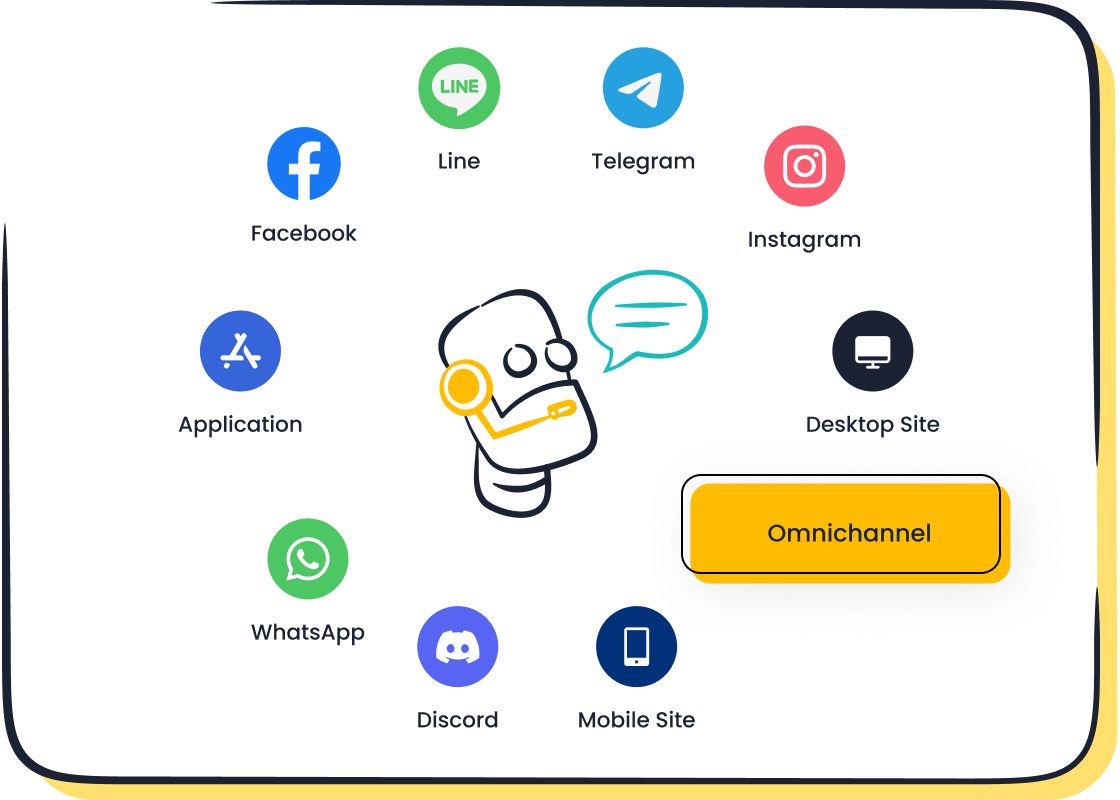
Sobot’s AI solutions excel in providing these insights. They track metrics like customer satisfaction, response times, and agent performance in real time. This helps you identify patterns and make data-driven decisions. For instance, if Sobot’s system detects a spike in inquiries about a specific product, you can quickly update your knowledge base or allocate more agents to handle those questions.
Did You Know? Businesses using real-time analytics see a 25% improvement in operational efficiency, according to a study by McKinsey.
Real-time insights also help you predict future trends. By analyzing historical data alongside live interactions, AI tools can forecast customer needs. This proactive approach ensures you’re always one step ahead. Whether it’s optimizing your workforce or enhancing customer experiences, real-time data is your secret weapon.
With Sobot’s advanced reporting and analytics features, you can turn raw data into actionable insights. This not only improves decision-making but also boosts overall efficiency. Ready to make smarter decisions? Start leveraging real-time data today.
Pro Tip: Use tools like Sobot’s Chatbot to gather and analyze customer data across multiple channels. This ensures you’re always in tune with your customers’ needs.
Challenges in Implementing AI
Addressing Data Privacy and Security Concerns
When you implement AI in your contact center, protecting customer data becomes a top priority. AI systems process vast amounts of sensitive information, which makes them a target for cyberattacks. High-profile breaches have shown how vulnerable personal data can be. For example, in 2021, unauthorized access to health records exposed millions of individuals' private information. This incident highlighted the urgent need for stronger data protection measures.
AI algorithms also pose risks by reidentifying individuals from anonymized data. A study on healthcare data breaches revealed that current safeguards often fall short, especially in the United States. To address these concerns, you should prioritize encryption, regular audits, and compliance with regulations like GDPR. Sobot’s AI solutions, for instance, ensure data privacy through features like encrypted backups and GDPR compliance, giving you peace of mind while handling customer interactions.
Tip: Always choose AI tools that prioritize security and compliance to protect your customers' trust.
Overcoming Integration Issues with Legacy Systems
Integrating AI with older systems can feel like solving a complex puzzle. Legacy systems often lack the flexibility needed to work seamlessly with modern AI tools. This can lead to higher costs and longer implementation times. Common challenges include poor data quality, the need for additional middleware, and extensive customization requirements.
| Challenge | Description |
|---|---|
| Complexity of the Legacy System | Older systems may require extensive modifications or replacements, leading to higher costs. |
| Data Quality and Availability | Poor-quality data may necessitate additional data cleaning, preparation, and annotation efforts. |
| Integration Challenges | Additional middleware or custom development may be required if the existing system is not compatible. |
| Customization Requirements | More extensive development and testing may be needed for custom features tailored to business needs. |
To overcome these hurdles, start by assessing your current infrastructure. Tools like Sobot’s AI solutions are designed to integrate smoothly with existing systems, minimizing disruptions. They also offer omnichannel support, ensuring a unified experience across platforms like chat, email, and social media.
Did You Know? Businesses that invest in integration-friendly AI tools often see faster implementation and better ROI.
Managing Resistance to Change Among Staff
Introducing AI can make your team feel uneasy. Some might worry about job security, while others may feel overwhelmed by the new technology. Surveys show that employees often lack knowledge about AI basics, which fuels skepticism. Questions about trust, readiness for change, and past experiences with technology rollouts also reveal common concerns.
- Employees may feel unprepared due to limited understanding of AI and data analytics.
- Some staff might view AI as a threat to their roles, leading to resistance.
- Trust in leadership plays a key role in how teams embrace AI initiatives.
To ease these fears, focus on education and collaboration. Offer hands-on training sessions where your team can explore AI tools like Sobot’s Chatbot. Show them how AI simplifies their work by handling repetitive tasks, allowing them to focus on meaningful interactions. Regular feedback sessions can also help build trust and address concerns.
Pro Tip: Highlight how AI complements human skills rather than replacing them. This approach fosters a positive attitude toward change.
Ensuring AI Accuracy and Reliability
When you rely on AI in your contact center, accuracy and reliability are non-negotiable. Imagine asking a chatbot for help and getting the wrong answer. Frustrating, right? That’s why ensuring your AI tools perform consistently and deliver accurate results is so important.
AI accuracy starts with high-quality data. The better the data you feed into your system, the smarter it becomes. For example, Sobot’s Chatbot uses a knowledge base built from articles, PDFs, and even text snippets. This ensures it provides precise answers to customer queries. Plus, it operates 24/7, so you can count on it anytime.
Testing is another key factor. Before rolling out AI tools, you should run them through real-world scenarios. This helps identify potential errors and ensures the system performs as expected. Sobot’s AI solutions, for instance, undergo rigorous testing to maintain a 99.99% system stability rate. That’s reliability you can trust.
Regular updates also play a big role. AI learns and improves over time, but only if you keep it updated. Businesses using Sobot’s AI solutions benefit from continuous optimization, which ensures the system adapts to changing customer needs. This proactive approach keeps your AI accurate and relevant.
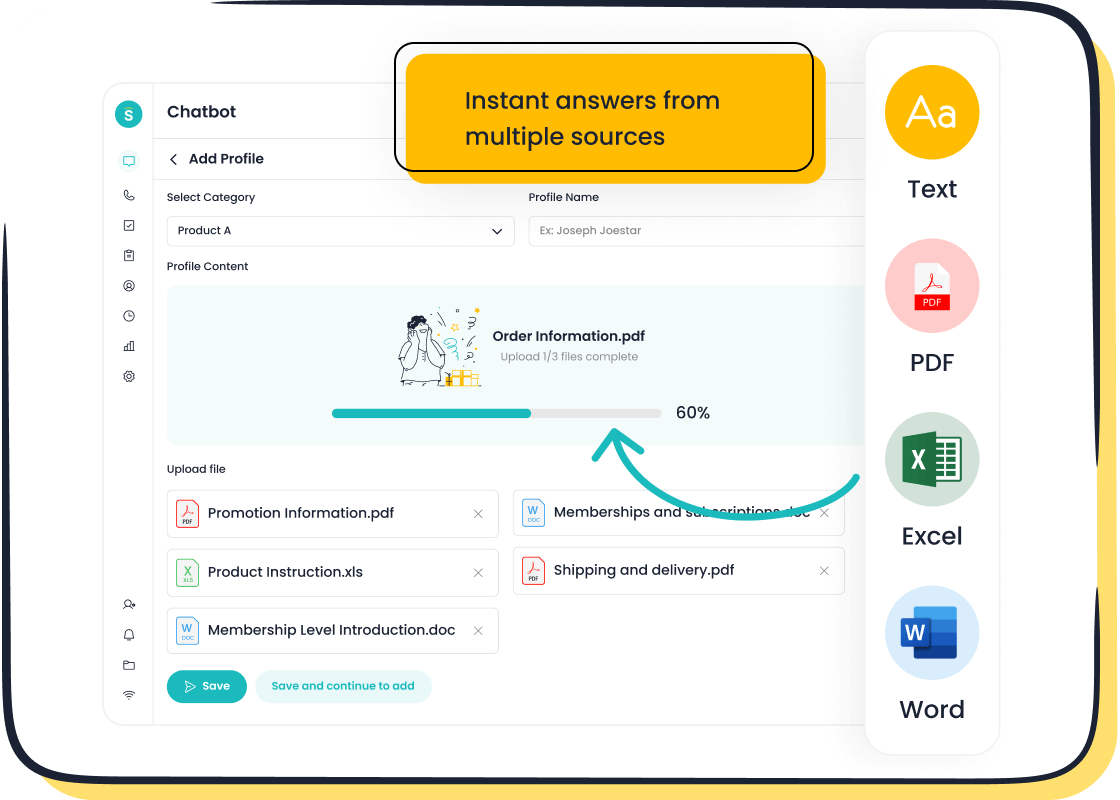
Pro Tip: Monitor metrics like error rates and response times to track your AI’s performance. If something seems off, tweak the system to improve its accuracy.
With tools like Sobot’s Chatbot, you can deliver reliable, accurate service that keeps your customers happy. Ready to take your contact center to the next level? Start by focusing on AI accuracy and reliability.
Best Practices for AI Integration in Contact Centers
Start Small with Scalable AI Use Cases
When it comes to AI, starting small can make a big difference. Instead of diving headfirst into large-scale implementations, begin with focused pilot projects. These smaller initiatives let you test assumptions, gather feedback, and refine your approach without overwhelming your team or resources. For example, Hitachi successfully demonstrated AI’s value by starting with a contained use case on the factory floor. This strategy allowed them to scale efficiently and explore more advanced applications later.
Here’s how you can follow this approach:
- Identify specific business problems that AI can solve, like reducing response times or improving first-call resolution.
- Continuously monitor performance and adapt strategies based on insights.
- Collaborate across teams to ensure data accuracy and alignment with business goals.
Sobot’s AI solutions, like its Chatbot, are perfect for scalable use cases. You can start by automating routine queries and gradually expand to more complex tasks. This step-by-step approach ensures a smoother transition and maximizes ROI.
Tip: Starting small doesn’t mean thinking small. Use initial successes to build momentum and scale your AI initiatives confidently.
Focus on Customer-Centric AI Applications
AI works best when it’s designed with your customers in mind. By focusing on customer-centric applications, you can enhance satisfaction and loyalty. Predictive routing, chatbots, and sentiment analysis are just a few examples of how AI can transform customer interactions.
Did you know that by 2024, 75% of organizations will use multiple AI applications in their contact centers? These tools don’t just improve efficiency—they also reduce global call center expenses by up to $80 billion. For instance, AI can analyze conversations to detect sentiment, helping agents respond more empathetically. It can also identify broken processes and suggest improvements, ensuring a smoother customer journey.
Sobot’s Chatbot excels in this area. It offers real-time intent recognition and multilingual support, making every interaction seamless and personalized. Whether you’re handling inquiries on WhatsApp or email, Sobot ensures your customers feel heard and valued.
Pro Tip: Use AI to predict customer needs and deliver proactive solutions. This approach not only improves satisfaction but also builds trust.
Invest in Training and Change Management
AI is only as effective as the people using it. That’s why investing in training and change management is crucial. Equip your team with the skills they need to leverage AI tools effectively. Tailored training programs can help agents understand both the technical and strategic aspects of AI.
Here’s a quick breakdown of effective strategies:
| Strategy | Description |
|---|---|
| Tailored Training | Develop programs for all user levels. |
| Ongoing Support | Provide resources and assistance post-implementation. |
| Change Management | Build data literacy and foster a culture of adoption. |
Sobot supports businesses with user-friendly AI tools that require minimal training. For example, its Chatbot features a no-coding setup, making it easy for teams to adopt. Combine this with clear communication plans and structured adoption processes to ensure a smooth transition.
Did You Know? Companies that prioritize training see higher adoption rates and better ROI from their AI investments.
Regularly Update and Optimize AI Systems
AI systems aren’t static. They need regular updates to stay effective and relevant. Think of them like a car—you wouldn’t drive it for years without maintenance, right? The same goes for your contact center AI tools. Regular optimization ensures they adapt to changing customer needs and keep delivering top-notch service.
Why Updates Matter
AI thrives on data. The more it learns, the better it performs. But outdated systems can lead to errors, slower response times, and even customer frustration. For example, a chatbot might misinterpret queries if its knowledge base isn’t refreshed. Sobot’s Chatbot avoids this by continuously updating its knowledge base from articles, PDFs, and other sources. This keeps responses accurate and relevant.
Tip: Schedule updates during low-traffic hours to minimize disruptions.
How to Optimize AI Systems
Here’s how you can keep your AI tools in peak condition:
- Monitor Performance Metrics: Track response times, error rates, and customer satisfaction scores. If something’s off, tweak the system.
- Refine Training Data: Feed your AI high-quality, diverse data to improve accuracy. Sobot’s AI solutions excel here, offering multilingual support and real-time analytics.
- Test Regularly: Run simulations to identify weaknesses. For instance, test your chatbot with complex queries to ensure it handles them well.
Real-World Benefits
Businesses that optimize AI systems see big gains. A study by McKinsey found that companies using updated AI tools improved customer satisfaction by 25%. Sobot’s AI solutions, with their 99.99% system stability, help businesses achieve similar results.
Pro Tip: Use AI-driven insights to identify trends and adjust your strategies. This keeps your contact center ahead of the curve.
Ready to take your AI systems to the next level? Start optimizing today!
AI is reshaping how businesses connect with you, making customer interactions faster, smarter, and more personalized. Companies like Uber use AI to handle over 2 million daily calls, proving its ability to enhance operational efficiency and improve your customer experience. With 90% of customers wanting instant responses, tools like Sobot’s Chatbot meet this demand by delivering seamless, round-the-clock support.
To unlock AI’s full potential, a structured approach is key. Define clear goals, test solutions, and continuously optimize performance. This ensures AI doesn’t just work—it thrives. Sobot’s AI solutions, including its Chatbot, offer everything you need to achieve customer service excellence. From reducing average handle times to boosting first-contact resolution rates, Sobot helps your contact center deliver exceptional service every time.
Ready to transform your customer experience? Explore Sobot’s AI-powered tools today and see the difference for yourself.
FAQ
What is the main benefit of using AI in contact centers?
AI improves efficiency by automating repetitive tasks like answering FAQs. Tools like Sobot’s Chatbot handle queries 24/7, reducing wait times and boosting customer satisfaction. For example, OPPO achieved an 83% resolution rate with Sobot’s AI solutions, freeing agents to focus on complex issues.
How does Sobot’s Chatbot improve customer interactions?
Sobot’s Chatbot offers real-time, multilingual support across platforms like WhatsApp and SMS. It uses advanced AI to understand customer intent and provide accurate answers. Plus, it’s customizable and boosts conversions by 20% through proactive messaging and smart self-service.
Is AI difficult to integrate into existing systems?
Not with the right tools! Sobot’s AI solutions integrate seamlessly with legacy systems, offering omnichannel support and easy setup. Businesses can start small with scalable use cases, ensuring a smooth transition without disrupting operations.
Can AI help reduce operational costs?
Absolutely! AI automation cuts costs by handling routine tasks and reducing agent workloads. Sobot’s Chatbot, for instance, saves up to 50% on additional agent expenses while improving productivity by 70%. This makes it a cost-effective solution for modern contact centers.
How does AI ensure data privacy and security?
AI tools like Sobot’s prioritize security with features like GDPR compliance, encrypted backups, and regular audits. These measures protect sensitive customer data, ensuring trust and compliance with global regulations.
See Also
A Comprehensive Guide to Omnichannel Contact Center Strategies
Essential Practices for Effective Call Center Quality Management
Understanding QMS Principles for Enhanced Call Center Performance
Exploring the Efficiency of Call Center Automation Techniques
